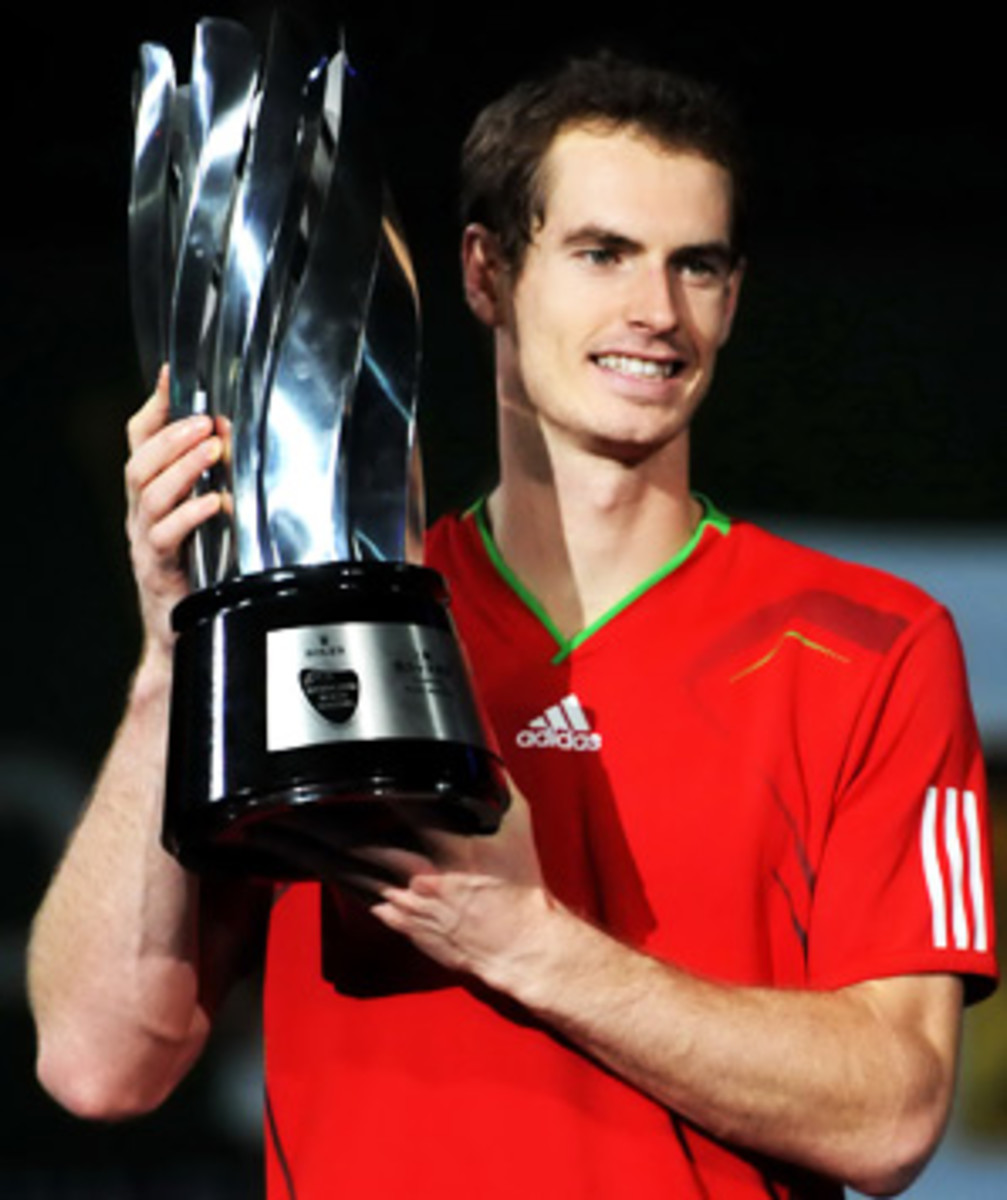Best of Three: Low fan turnout in Shanghai, Slam conspiracy theory
1. Tapping the Chinese market: The ATP wended its way through Shanghai for the Rolex Masters Series event last week; and it afforded us a chance to ponder this Zen riddle: if a seed falls in a tennis tournament and no one is there to see it, did it really happen? There were a number of upsets and intriguing results -- not least, Rafael Nadal falling to Germany's Florian Mayer. Andy Murray continued his autumn tear, taking out David Ferrer to win the title. (And, in the process, knock Roger Federer down to No. 4 in the rankings.)
Sadly most of the action played out in front of appalling small crowds; we're talking fewer fans than attend the average high school match. A JV high school match. Like most businesses, sports properties devote great time and resources figuring out how to penetrate China and tap into the world's largest population. Tennis appeared to have a nice beachhead, what with a gleaming facility in Shanghai ("Grand Slam ready," we've been told/threatened) and a recent Grand Slam champion in Li Na.
But that sure didn't translate to fans last week. Whether it was distance of the venue from downtown Shanghai (an hour with no traffic) the high price of tickets or the scheduling of matches during the workday, there were vast oceans of empty seats. This doesn't mean the event was a failure. Attendance is only part of the sports equation, a diminishing one at that. Still, it suggests that for all of China's potential, there's work to be done. You have believe that the NBA and NFL are paying close attention and figuring out the source of the marketing shortcomings and challenges.
2. Bracket science: On several occasions, we've discussed the unlikely frequency of Roger Federer facing Novak Djokovic in the semifinals of Grand Slam events. Under traditional bracket seeding, a semifinal pits 1 vs. 4 and 2 vs. 3. Tennis, though, places the top seed in the top half of draw, the second seed in the bottom half and then randomly assigns No. 3 and No. 4 to the two remaining open quadrants. So it would seem odd that Federer and Djokovic have played so often -- drawn in the same half 15 of 16 Slams since the 2008 Australian Open (with 2010 Roland Garros the lone exception) according to the ATP's Greg Sharko -- even when one had been ranked No. 1 and the other No. 3.
Some of us (self included) simply chalk this up to randomness. Flip a coin a dozen times and you could have 12 heads. But, as a rule, we don't like randomness. And as a rule, we like conspiracy theories. Inevitably this has triggered raised eyebrows. Katarina Pijetlovic, a European academic, goes further still, wondering if this isn't a Nike plot to maximize the chances of a Federer-Nadal final. Go to the 12:30 mark and judge whether she proves her case.
3.Race to Isantbul: While the men continue complaining about the length of the schedule, one doesn't hear nearly as much bleating on the women's side. One reason: responding to player concern, the WTA has successfully truncated the season, holding the last tournament before Halloween -- and more than a month before the men's season swan song.
Next week will mark the start of the TEB BNP Paribas WTA Championships, held in Istanbul. One spot is still up for grabs -- Marion Bartoli won in Osaka and is still in the running. This event gives players a chance to take home a boatload of cash, finish the year strong, and -- though momentum has been hard to come by in the women's game lately -- start 2012 on a high note. If you're handicapping the field, pay attention to Petra Kvitova -- who won the Linz event on Sunday -- finally returning to her winning ways after a post-Wimbledon slide.






